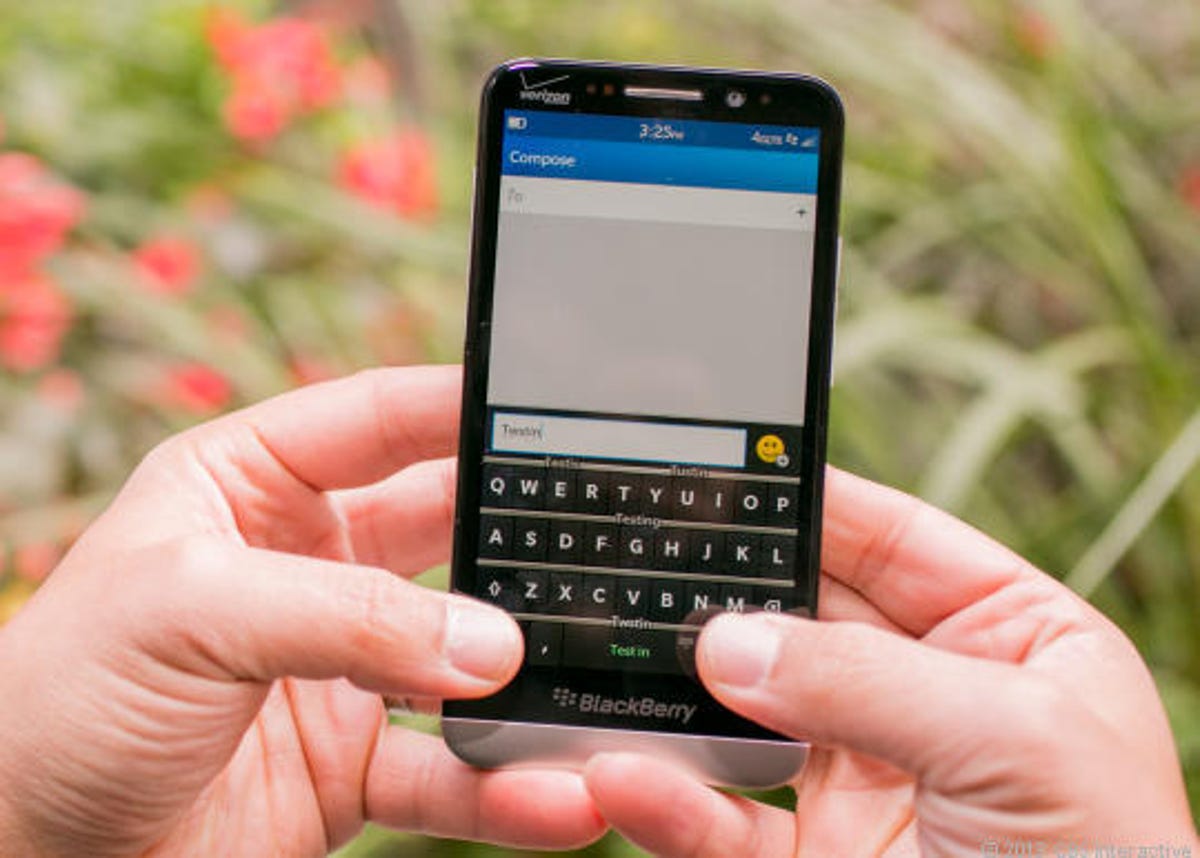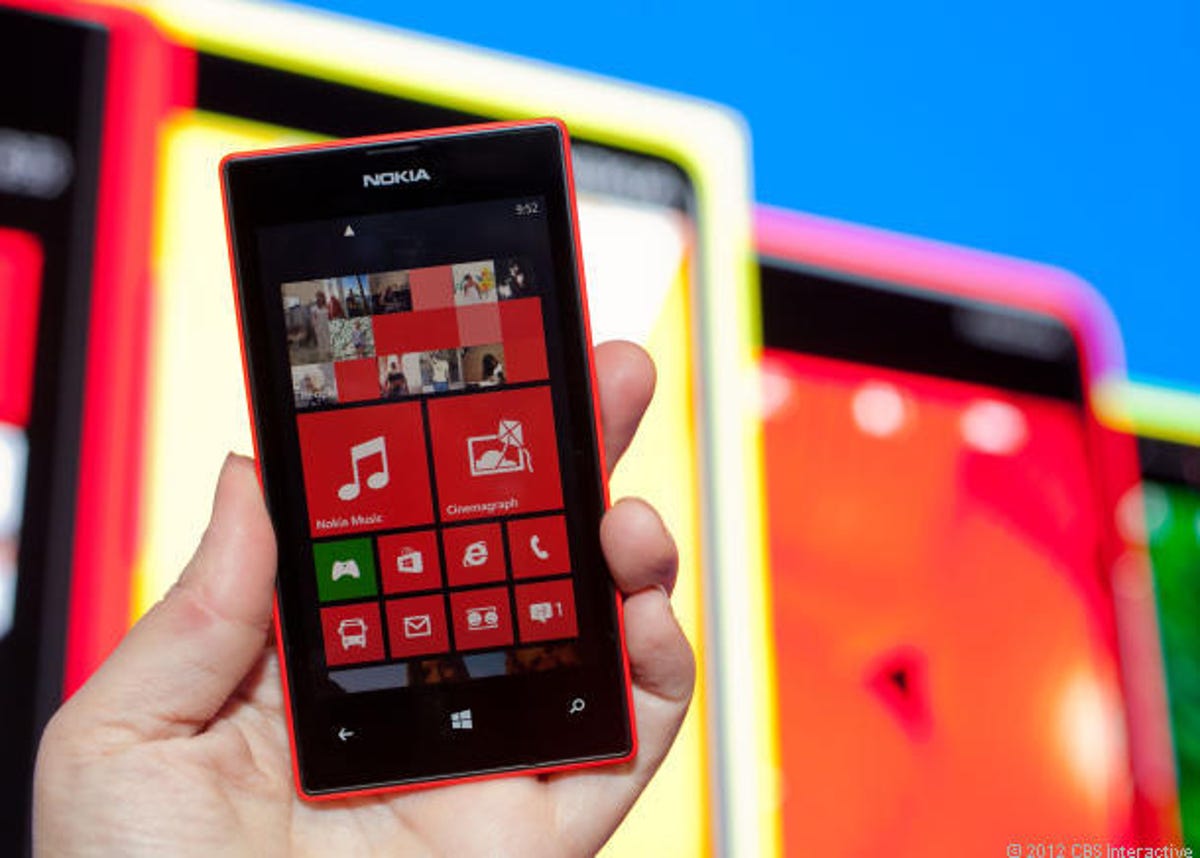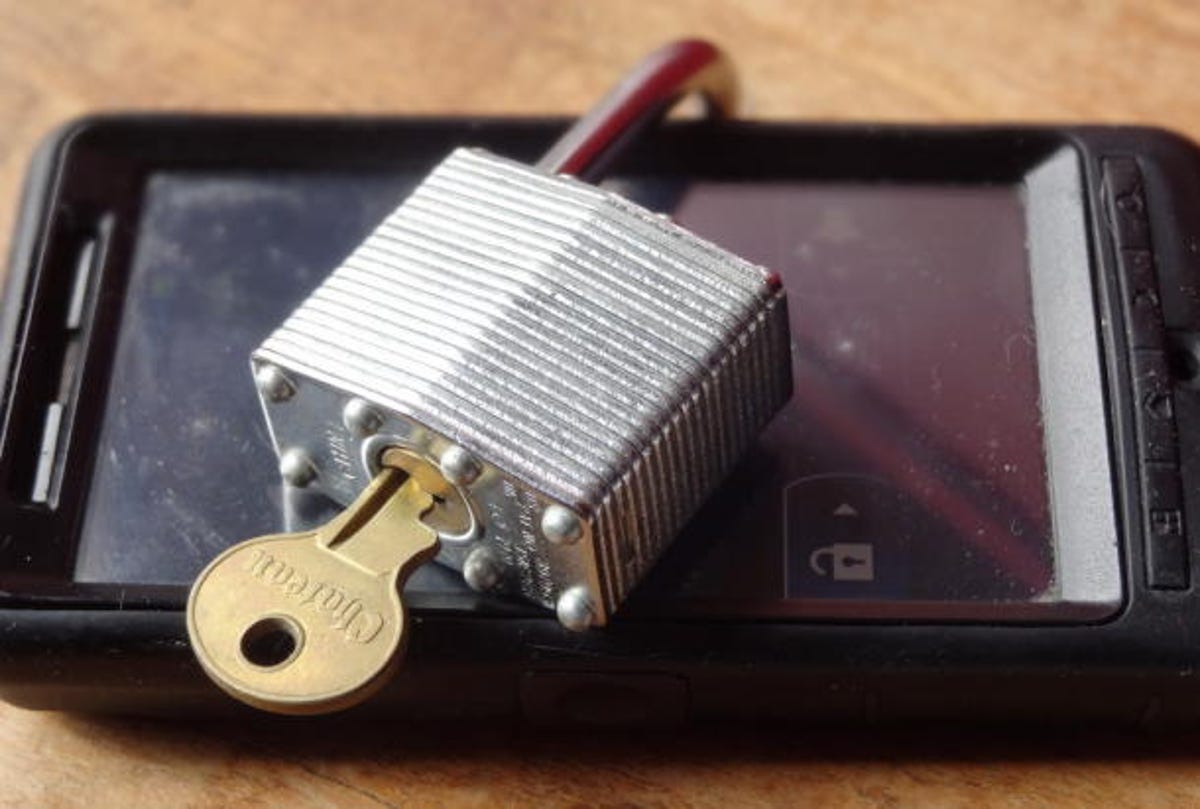This past year was a busy one for the mobile market. And next year will likely be just as intense.
Wireless operators were busy wheeling and dealing to get more wireless spectrum. And they were busy upgrading their networks to 4G LTE service, truly making 2013 the breakout year for faster wireless service.
There was also a lot of deal activity among handset makers, as smaller players struggled to find ways to compete against the two dominant players, Apple and Samsung. What’s expected to happen in 2014? I took out my crystal ball and put together this list of my top 10 predictions based on recent trends and conversations with sources. Take a look and let me know what you think.
Wireless bargain hunters rejoice, carriers are finally listening
If you’re in the market for a better value for your wireless plan, 2014 should be a good year for you. AT&T recently announced a new Mobile Share plan that offers an incentive to customers who use an older phone or bring their own unlocked device to the network. It’s a plan similar to one that T-Mobile started offering in March.


Under the AT&T plan, consumers can save $15 a month on every smartphone connected to their plan if they don’t take a device subsidy and sign a two-year contract. This plan and T-Mobile’s plan, which also offers a discount on monthly service if you already own your phone, is a positive step for consumers and shows that some major operators will be aggressively fighting for consumers looking for a better value on their wireless plans.
AT&T’s CEO Randall Stephenson said the company will be addressing the value segment of the market more. There are two reasons for this. One is that more people have smartphones, and the other reason is that 4G LTE networks offer more capacity at a lower cost. This makes it not only necessary but feasible for AT&T and other carriers to go after a market focused more on value.
Related stories
- Galaxy S22 Deals: Up to $1,100 Off at Best Buy, $800 Off at Samsung and More
- Best Prepaid Phone Plans in 2022
- Worries About Post-Roe Data Privacy Put Spotlight on Period Apps
- Senators Urge Apple, Google to Stop App Data Collection That Could ID Those Seeking Abortions
- Best Budget Phone Plans in 2022 (and the Fine Print)
While I don’t expect carriers like AT&T to slash pricing across the board, I do think there will be more pricing options available, which will result in better value for some wireless customers.
It may take Verizon Wireless a bit longer to respond to the value play, given that the company has a long history of charging a premium for its service due to its reputation for having the most reliable network in the market. But recent capacity constraints in key markets have marred Verizon’s unblemished reputation. And if the carrier continues to struggle under the weight of increased traffic demand, it could be drawn into the value game as well.
My advice for bargain hunters in 2014 is to stay tuned for more service plan shake-ups. And keep your calculators close at hand to see which ones really offer the best value.
Wireless operators lobby hard in Washington
New Federal Communications Commission Chairman Tom Wheeler has taken office and one of his first orders of business was to delay the upcoming incentive spectrum auction.


Saul Loeb/AFP/Getty Images
The auction, which will let TV broadcasters give up spectrum for a cut of the auction proceeds, is one of the most complicated the FCC has ever designed. Wheeler said that it was critical for the government to get this right, so he pushed back the auction a year to give the agency more time to prepare. But even with the auction still more than a year away, wireless operators are already ramping up their lobbying efforts.
While the much needed low-band spectrum from the broadcast incentive auction is still more than a year off, the FCC is preparing two other wireless auctions for 2014. The first is the H-block auction, which has only one significant bidder, satellite TV provider Dish Network. The next auction of the so-called AWS-3 band of spectrum is expected to get a lot more attention. This spectrum auction is set for September 2014. It’s expected to create a lot of buzz, so stay tuned.
Carrier consolidation continues
The past couple of years have already been filled with a lot of M&A activity among wireless carriers. The trend is expected to continue in 2014.
In 2013, AT&T bought beleaguered prepaid provider Leap Wireless. T-Mobile bought MetroPCS. Japan’s Softbank completed its purchase of Sprint. And Sprint bought out its remaining stake in Clearwire. With so much activity in 2013, it seems like there couldn’t possibly be anymore deals to be made.
But think again. There are already rumblings that Sprint is putting together a deal to buy T-Mobile, which isn’t a huge surprise given that T-Mobile’s parent Deutsche Telekom has not been shy about its desire to exit the US market. But it’s unclear at this point whether federal regulators would approve such a deal. It could be hard given that both the Department of Justice and the Federal Communications Commission have been pleased with T-Mobile’s recovery in 2013 following its failed merger with AT&T in 2011.
But other deals may also be in the works. Satellite TV provider Dish Network is chomping at the bit to buy…somebody. Last year, the company attempted and failed to buy Sprint and Clearwire. Dish’s founder, Charlie Ergen, has also been gunning for wireless assets from the bankrupt carrier LightSquared. And Dish is expected to be the sole nationwide bidder on wireless spectrum in the H block auction in January. Dish has been stockpiling wireless spectrum for the past couple of years, and 2014 could be the year the company makes a move either by building a network on its own or through an acquisition of an established player. In either case, Dish is a player to watch.
T-Mobile shakes up the industry yet again with more of its “Uncarrier” strategy
T-Mobile is readying the next phase of its “Uncarrier” strategy. The company has already eliminated contracts, removed device subsidies, introduced an early upgrade program, given away 200MB of tablet data for free, and eliminated roaming charges for international travelers in more than 100 countries. It’s been quite a year for T-Mobile to say the least.


Screenshot by Roger Cheng/CNET
But the company’s executives say they aren’t done yet. Recently, CEO John Legere took to Twitter to promote an upcoming announcement in early 2014 that will “eliminate another customer pain point.”
What could it be?
Improved 3G and 4G coverage? The biggest pain point for T-Mobile customers is its lack of coverage outside of big cities, but improving that doesn’t sound very “Uncarrier” to me.
Bundle fees and taxes into price? My guess is that T-Mobile may improve again on pricing, possibly bundling monthly rates with taxes and other service fees to show one price. Prepaid players have been doing this for a long time. But such simply pricing still eludes the big wireless providers.
No unlocked phones? While T-Mobile and the other major carriers have agreed to unlock devices after they’ve been paid off, maybe T-Mobile will skip the whole locked phone thing to begin with. And when customers buy devices outright from the carrier, maybe they will be unlocked out of the box.
Unlimited number of lines to family plans? Maybe T-Mobile will remove the limit of how many phones can be added to a family plan.
Of course all of these are just guesses at this point. T-Mobile’s CEO was vague in his tweet. But one thing is clear. The company isn’t done shaking up things in the wireless market, so stay tuned.


Lynn La/CNET
Sprint emerges stronger from its “rebuilding year”
Much like a sports team that is forced to rebuild its team with younger, more nimble players after a season of losses due to player injuries and retirements, Sprint is rebuilding its business. And the company’s CEO Dan Hesse thinks that even though 2013 has been an ugly year in terms of performance for the carrier, 2014 will be be much brighter as Sprint gets back on its feet.
Speaking at an investor conference in New York recently, Hesse admitted that the company’s upgrade to its new Network Vision and Spark enhanced LTE network has been painful. But he said the pain of today will be worth it tomorrow.
Hesse likened the transition to the story of the “Three Little Pigs.” Sprint is building a house of brick while its competitors are using straw and stick. And even though Sprint’s network is taking a longer time to build, it will last longer. And he said that customers will soon see the fruits of this labor.
That said, Sprint customers are still likely to experience some hiccups in 2014 as Sprint expands its Network Vision network that replaces all of its old infrastructure with new gear and gets its LTE network up and running. Hesse admitted that the carrier will likely continue to see customer defections as these networks get completed. But by mid-2014 he said things should be turning around for Sprint.
The good news is that the 4G LTE network has just been expanded to 70 more cities, including Green Bay, Wis.; Orlando, Fla.; San Diego; and St. Louis. The new LTE markets bring Sprint’s total to 300 across the United States.
By the middle of 2014, Sprint 4G LTE service is expected to be available to approximately 250 million Americans, and Sprint expects 100 million Americans will have Sprint Spark or a service that uses the 2.5GHz wireless spectrum from its acquisition of Clearwire by the end of 2014.


Sarah Tew/CNET
BlackBerry: Things will get worse before they get better
BlackBerry has had a rough year. The company had a disastrous launch of its new BlackBerry 10 operating system with the debut handset, the Z10, being a major flop. As a result, the company has been shedding customers like someone with a bad case of dandruff.
Desperate for a change, the company has booted out its old management and replaced it with a turn-around expert, interim CEO John Chen. On the company’s recent quarterly conference call, Chen admitted that things looked grim for the company, especially on the device front. But he said BlackBerry is finally positioned to fight back.
The big change for BlackBerry is its shift away from the consumer handset business in North America and a greater focus on its enterprise and messaging software business for the enterprise. The company will also be targeting developing markets with its mobile handsets. And it’s created a partnership with device manufacturer Foxconn that will allow the company to cut costs on device manufacturing and minimize inventory risks.
So what’s next for BlackBerry? In March or April, look for the first device from the fruits of the Foxconn partnership. It will be sold in Indonesia.
BlackBerry may also announce plans to bring its security and productivity enterprise apps to Google Android and Apple iOS devices. The company just recently began offering its BlackBerry Messaging app for Android and iOS. And CEO John Chen said he’s very interested in working with Apple and Google on bringing more of BlackBerry’s functionality to those platforms. But don’t expect an announcement in the first half of the year. Chen said he might need one or two quarters to work out the details and best course of action.
Of course, the big question in 2014 for BlackBerry is whether or not the company will even be around for 2015. Given the amount of cash the company has on hand and the way it’s cutting costs and managing the business, it will likely be around for awhile. But 2014 will be make or break in terms of figuring out if Chen’s new strategy can save the company.


Sarah Tew/CNET
Microsoft kills Lumia brand
One of the biggest moves in terms of the wireless device market in 2013 was Microsoft’s $7.2 billion bid to acquire Nokia’s devices and service businesses. The tie-up between the two companies came as little surprise given the tight relationship the companies have had since 2011, when Nokia decided to exclusively use the Windows Phone operating system for its smartphones.
Since then, Nokia has been the premiere Windows Phone hardware maker pushing the operating system, which has grown in acceptance, but still lags behind Apple iOS and Google Android. As a result, any success Microsoft has experienced with Windows Phone is intrinsically tied to Nokia’s success with the Lumia brand of smartphones.
But as the Nokia sale to Microsoft is finalized in early 2014 and as Microsoft begins integrating the products into the mothership, it’s unclear what will happen to the Lumia brand. While it’s obvious that Microsoft bought Nokia for its hardware, Microsoft has begun building its own mobile hardware. The company has been selling its Surface tablet, based on its Windows RT software. And while it hasn’t announced a Surface smartphone, one has been rumored to be in the works.
Meanwhile, Nokia has also developed a Lumia tablet using Windows 8.1 RT, called the Lumia 2520. It was released this fall on the heels of Microsoft’s newest Surface 2, which uses the exact same operating system. Talk about awkward.
It seems pretty clear from a consumer standpoint that keeping both brands could get very confusing. So it’s likely that Microsoft will be forced to choose.
Rumors have already bubbled up suggesting that the 8-inch mini tablet from Nokia called the Lumia 2020 has been canned in lieu of a similar 8-inch mini Surface tablet that Microsoft plans to announce early in 2014. If these rumors prove true, it could mean lights out for the Lumia brand.
In any case, a rethinking of the Lumia and Surface brands are likely to be in the works as Microsoft and Nokia finalize their merger. What this means for the products themselves and for consumers using them is not yet known. An optimistic prediction is that regardless of what they call the new hardware, Microsoft-developed and -built products will hopefully incorporate Nokia designs and focus on mobility.
Apple vs. Samsung: The saga continues
The long-drawn out battle between Apple and Samsung over patent infringement will continue in 2014 and beyond. The two companies have been embroiled in a bitter legal battle since April 2011 when Apple filed a lawsuit accusing Samsung of copying the look and feel of its products. Samsung countersued two months later over patent infringement.


The initial trial concluded in August 2012 and a nine-person jury sided with Apple on a majority of its patent infringement claims against Samsung Electronics. At that time, the jury awarded Apple $1.05 billion in damages; Samsung wasn’t awarded anything. In March, a judge ordered a new trial to recalculate some of the damages, striking a big hunk of money from the original judgment.
Another trial was held in California in November. And a second jury awarded Apple an additional $290 million in damages from Samsung, bringing the total amount of damages Samsung will pay Apple to $930 million.
But the retrial didn’t mark the end of the Apple-Samsung battle. CNET’s Shara Tibken who has been following the legal battle says there are likely to be more appeals, and another patent trial looking at newer devices will start in March. Devices involved in the next trial include Samsung’s Galaxy Nexus, Galaxy S3, and Note 2. And Samsung has named Apple’s iPhone 5 in a counterclaim. This next trial could actually have a greater effect on consumers given the fact that these devices are a bit newer than the ones named in the previous trial.


Amanda Kooser/CNET
Unlocked phones hit the mainstream
This could finally be the year that US consumers get access to a wider variety of unlocked phones. For years wireless operators have controlled which devices can be used on their networks by forcing manufacturers to put software locks on them. And though there have been a few mobile devices sold without such locks, such as the Google Nexus phones and the new Motorola G just announced this fall, most devices even if they are paid for in full, have these locks. But there could be a greater variety of unlocked devices at different price-points hitting the US market in 2014 thanks to two major developments in 2013.
The first is that carriers such as AT&T and T-Mobile are now offering consumers an incentive to bring unlocked devices to their networks, thus creating a real market for unlocked devices.
New service plans that encourage customers to take their cell phones with them when they switch carriers comes as the major mobile phone companies in the US reach an agreement with the Federal Communications Commission to make it easier for consumers to unlock their phones once they are paid off.
The agreement announced earlier this month is a “voluntary” commitment from the major carriers, including AT&T, Verizon Wireless, Sprint and T-Mobile, that they will unlock customers’ cell phones once their contracts have been paid off. The wireless carriers have also committed to notifying customers when their devices are eligible to be unlocked, or they will automatically unlock those devices remotely for free.
This is a big deal for US consumers who will finally be able to take their cell phones with them to compatible networks when they’ve paid off their devices or concluded their service contracts.
LG re-emerges as a hot Android device maker, while HTC’s star fades
LG’s presence in the US smartphone market has waned in recent years. But it looks like the company started to get its mojo back in 2013 with the introduction of some new high-end devices.


CBS Interactive
The company made two hot new Nexus phones for Google. And it’s rumored to be working on the next product in the Google Nexus lineup. Despite the fact that its flagship G2 Android smartphone hasn’t sold particularly well, it has been well-received among device reviewers. Some people have argued it’s the best smartphone the company has released in a long time. With the wind at its back going into 2014, this could be the year, the company breaks in as a credible alternative to Apple and Samsung, especially in the US market.
While LG’s star may be rising, HTC’s seems to be fading. It’s likely to be another tough year for the Taiwanese mobile phone maker. Despite releasing its critically acclaimed smartphone, the HTC One, this year, the company also reported its first ever financial loss. And it’s not likely the company’s financials will rebound anytime soon.
As CNET’s Roger Cheng pointed out in a story in October following the release of its third-quarter losses, the results reflect ongoing issues the company faces. The biggest problem is its small size. It doesn’t have the marketing muscle to compete against Apple and Samsung, even when it arguably has better products.


“HTC is clearly getting squeezed, and there doesn’t seem to be a way out,” Roger wrote earlier this year.
Indeed, it seems unlikely that HTC will be able to dig itself out of the hole it fell into in 2013. The company has talked about getting more aggressive with marketing, but the company, which is one of the only major manufacturers in the US focusing exclusively on smartphones, is easily outflanked by bigger competitors. Even LG, which has also struggled in the US market, has a better chance against the two giant device makers in 2014 largely because it has multiple business lines and deeper pockets than HTC.
Unfortunately for HTC, 2014 is sink or swim time.



